 Tags: class, community, crime/law/deviance, inequality, intersectionality, methodology/statistics, prejudice/discrimination, race/ethnicity, rural/urban, ethnography, gentrification, housing, urban poverty, visual sociology, 21 to 60 mins Year: 2005 Length: 52:00 Access: no online access Summary: Directed by sociologist Sudhir Venkatesh, this documentary film is based on ethnographic field research conducted by Venkatesh at the (now demolished) Robert Taylor Homes public housing development in Chicago, IL. A description of the film is provided on the film's website: "In February 2002, families living in the Robert Taylor Homes public housing development were given a 180 day notice of eviction. In six months, the community that had been their home for generations would be demolished. DISLOCATION chronicles the lives of tenants in one building as they move through the six-month relocation process. The filmmakers follow three families as they prepare for their own move and as they help others around them. DISLOCATION is a story of a community coping with its own impending demise. It is a tale of courage, hope, and survival." This film is an ideal compliment to most topics covered in an urban sociology course, which include discussions of gentrification, urban poverty, racism, underground economies, community and family support networks, police interactions, and much more. The ideas explored in the film are expanded in more detail in Venkatesh's books, American Project: The Rise and Fall of a Modern Ghetto (2000) and Gang Leader for a Day: A Rogue Sociologist Takes to the Streets (2008), which are based on the same ethnographic field research. The film (and books) would also be excellent to use in an ethnography course, and could help guide class discussions around written vs. visual ethnographies, and the (subjective) role of the ethnographer and her relationship to her research subjects. To gain access to the film, check out your university library or you can find purchasing information here. Submitted By: Valerie Chepp
3 Comments
 Tags: capitalism, class, inequality, intersectionality, knowledge, marx/marxism, alienation, working poor, 61+ mins Year: 2009 Length: 70:00 Access: Netflix (trailer here) Summary: This film follows custodial staff at several U.S. colleges/universities, documenting the workers' daily lives on and off campus. The documentarians interview each person, attempting to understand their personal biographies, their daily experiences as a custodian, and their philosophies on life, love, religion, etc. This film can be used instructively in the following ways: 1) in a lecture on class, inequality, the working poor, or Marx's concept of alienation, 2) as a tool to highlight the experiences of people extremely close in proximity to students, as custodial staff are often ignored by undergraduates and other members of college/university campuses; this is also a great time to introduce campus-led initiatives such as the Harvard Living Wage Campaign, 3) as a tool to understand intersectionality, and how the intersecting identities of the custodial staff result in certain material inequalities, and 4) in class discussions about the social construction of knowledge, as the custodial staff offer epistemological perspectives rooted in unique social locations and life histories; the juxtaposition between the knowledge articulated by the custodial staff and the knowledge-producing institutions in which they work, as well as the quotes by well-known philosophers interwoven between segments, offers a very fruitful site for analysis. Submitted By: Beverly M. Pratt 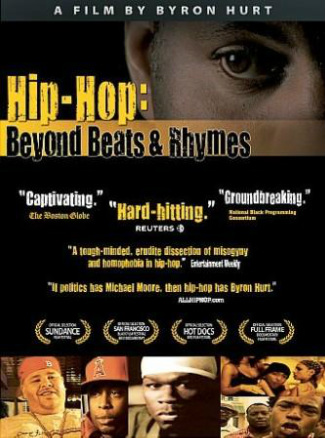 Tags: art/music, commodification, consumption/consumerism, discourse/language, gender, intersectionality, lgbtq, media, race/ethnicity, sex/sexuality, violence, femininity, homophobia, masculinity, media literacy, popular culture, sexism, sexual objectification, stereotypes, subtitles/CC, 21 to 60 mins Year: 2007 Length: 55:31 Access: YouTube (trailer here) Summary: Using his own relationship with hip-hop as a guiding light, filmmaker Byron Hurt presents "HIP-HOP: Beyond Beats and Rhymes, a riveting documentary that tackles issues of masculinity, sexism, violence and homophobia in today’s hip-hop culture. Sparking dialogue on hip-hop and its declarations on gender, HIP-HOP: Beyond Beats and Rhymes provides thoughtful insight from intelligent, divergent voices including rap artists, industry executives, rap fans and social critics from inside and outside the hip-hop generation. The film includes interviews with famous rappers such as Mos Def, Fat Joe, Chuck D and Jadakiss and hip-hop mogul Russell Simmons; along with commentary from Michael Eric Dyson, Beverly Guy-Sheftall, Kevin Powell and Sarah Jones and interviews with young women at Spelman College, a historically black school and one of the nation’s leading liberal arts institutions. The film also explores such pressing issues as women and violence in rap music, representations of manhood in hip-hop culture, what today’s rap lyrics reveal to their listeners and homoeroticism in hip-hop. A “loving critique” from a self-proclaimed “hip-hop head,” HIP-HOP: Beyond Beats and Rhymes discloses the complex intersection of culture, commerce and gender through on-the-street interviews with aspiring rappers and fans at hip-hop events throughout the country." (Excerpt from the film's website on PBS IndependentLens.) Click here for excellent classroom materials and teaching resources, including a discussion guide, video modules, education guide, issue briefs, and more. Additional information also available at www.bhurt.com. Submitted By: Valerie Chepp 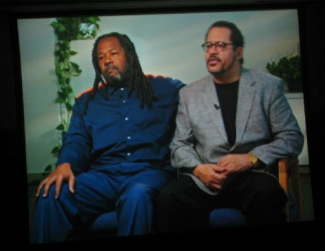 Tags: inequality, intersectionality, prejudice/discrimination, race/ethnicity, social construction, shadeism, skin tone, 06 to 10 mins Year: 2008 Length: 8:54 Access: CNN Summary: This CNN video focuses on the differential treatment of African Americans based on the skin tone (i.e. comparing lighter and darker skinned African-Americas). It uses Dr. Michael Dyson (a successful, light skinned black male sociology professor) and his younger brother (an incarcerated, dark skinned black male) as a case study of two people raised in the same disadvantaged circumstances but end up with very different outcomes. The commentator asks how they end up in such different places? Both men emphasize that their lives were guided by individual choices but Michael insists that he was allowed and encouraged to make better choices and was given the vocabulary to express them. The differential treatment that Michael Dyson received because he was a "curly top, yellow Negro" was evident, and the video discusses the role of skin tone in shaping their paths through life. It can be used not only to initiate discussions of how race is socially constructed but how racial distinctions (and discrimination) exist within the Black community. See also this documentary on shadeism, and this documentary on the social construction of race. Submitted By: Angela Johns and Brittany Goldsboro 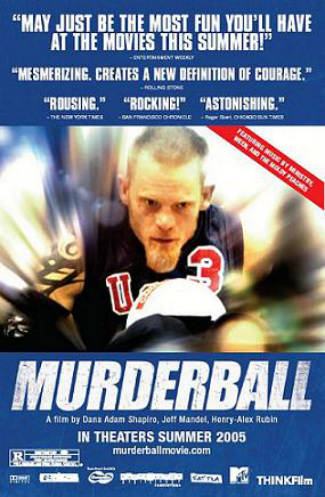 Murderball Tags: bodies, disability, intersectionality, sports, masculinity, master status, stereotypes, subtitles/CC, 06 to 10 mins, 61+ mins Year: 2005 Length: 85:00 (or first 10 min) Access: no online access (trailer here) Summary: This documentary explores the world of quad rugby (i.e., murderball), which is a full-contact sport for quadriplegics, who compete with wheelchair specially designed to take the hard knocks of the sport. The film follows the U.S. quad rugby team through their competition in the 2002 World Championships and the 2004 Paralympic Games in Athens. Recently, I have used the first 10 minutes of the film in a class period on disability, where we are introduced to the people on the team, and also to the sport. Watching these men physically compete in a competitive sport (and manage the activities of their daily lives) is great for breaking stereotypes about people in wheelchairs. It would also be a good way to explore master statuses (like being in a wheelchair); this film is a nice starting point to discuss both masculinity and how people maintain complex and multi-faceted identities despite disability. Submitted By: Molly Dingel  Loretta Ross Tags: gender, intersectionality, knowledge, race/ethnicity, social mvmts/social change/resistance, feminism, identity politics, women of color, 00 to 05 mins Year: 2011 Length: 3:00 Access: YouTube Summary: Here is a clip of Loretta Ross, co-founder and national coordinator of SisterSong-Women of Color Reproductive Justice Collective, commenting on the origins of the term "women of color". As Ross suggests, people often forget that the term "women of color" is not a biologically-based description but has a political and ideological history. Ross explains that the term stems from meetings in 1977 at the International Women's Year Conference (WYC) in Houston, Texas. In response to the growing awareness that the unique concerns and challenges of Black women were not being addressed in the women's movement more broadly, a group of Black women from Washington DC traveled to the conference to propose a Black women's agenda. At the conference, groups representing other minority women joined the Black Women's Agenda (BWA), and the new alliance adopted the more inclusive term "women of color". Thus Ross notes that the term is "a solidarity definition; a commitment to work in collaboration with other oppressed women of color." Ross recounts a history which emphasizes the need for women of color to come together as a distinct political community. She emphasizes a moment of affiliation for a political cause within the women's movement, but she is also implicitly discussing the importance of recognizing the varied and distinct, intersectional identities of women. After showing the clip, instructors might provocatively ask students to consider how they would respond to the usual attack leveled against identity politics, which would claim that the BWA splintered the women's movement and made it less effective. Submitted By: Lester Andrist 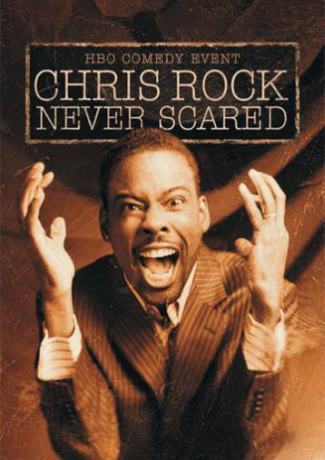 Tags: class, inequality, intersectionality, race/ethnicity, comedy, 00 to 05 mins Year: 2004 Length: 3:36 Access: YouTube Summary: (Trigger warning: there is cursing in this clip.) In this segment (clip begins at 30-second time mark) from his show "Never Scared," comedian Chris Rock explains the difference between being rich and being wealthy. I like to use this clip when I discuss the racial wealth gap (generally in conjunction with The Hidden Cost of Being African American) and how wealth is racialized in the United States. Instructors and students can go on to critically assess Rock's claims about why black and brown people do not have wealth compared to whites. This clip contributes to The Sociological Cinema's growing collection of comedy clips that are useful for illustrating or beginning a discussion about sociological concepts. Submitted by: Kendra Barber 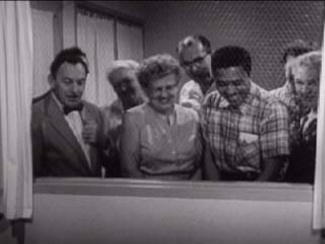 A scene from Social Class in America, 1957 Tags: class, gender, intersectionality, race/ethnicity, achieved status, ascribed status, horizontal mobility, intergenerational mobility, intragenerational mobility, stratification, vertical mobility, subtitles/CC, 11 to 20 mins Year: 1957 Length: 14:50 Access: YouTube Summary: This sociology documentary from the 1950s demonstrates how long social class has been a concern of sociologists. The film follows the lives of three men from different social classes and explores concepts, such as horizontal mobility, vertical mobility, achieved status, and ascribed status. The obvious omissions of gender, race and other socially constructed categories that matter to analyses of inequality are glaring from a contemporary perspective. Following the film, students can be encouraged to discuss what difference it might make to critically examine how gender or racial inequality varies by social class. What would an intersectional analysis look like? Also, how is it that gender, for example, was completely overlooked in this sociological documentary? The film nonetheless illustrates how class works as an intergenerational phenomenon, as well as how class status can change depending on geography and place. This film's outdated look often proves entertaining for students and can become an ice-breaker for an otherwise reluctant class. Submitted By: Daniel Williams 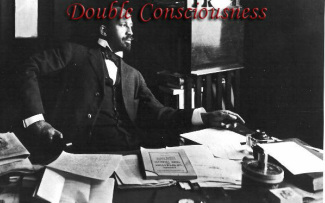 Tags: class, du bois, intersectionality, race/ethnicity, black middle class, double consciousness, the veil, subtitles/CC, 06 to 10 mins Year: 2001 Length: 7:43 Access: No online access Summary: This is another clip from People Like Us: Social Class in America (start 42:55; end 50:37). It explores issues of race and class among the Black Middle Class. It documents the tensions of upwardly mobile African Americans who want to achieve the celebrated (middle class) position of the American mainstream, but at the risk of losing their black culture and identity. It is a good demonstration of Du Bois' concepts of the veil and double consciousness among a group that is aware of their own Black identity, but also aware of how mainstream White culture views them and the challenges they face as African Americans. Submitted By: Paul Dean  Glenn Beck and other television personalities use rape metaphors Tags: gender, intersectionality, media, nationalism, rape, masculinity, femininity, subtitles/CC, 00 to 05 mins Year: 2009 Length: 2:15 Access: YouTube Summary: This remix features conservative commentators such as Rush Limbaugh, Glenn Beck, and Michael Savage employing rape metaphors when discussing various political policies. A number of references in the remix rhetorically position women as the victims of rape and unscrupulous men as the rapists. Thus the clip can be used to underscore the way gendered violence is often keyed to a host of political issues in order to provoke the public or suggest a greater sense of urgency. Taking the analysis a step further, one can trace symbolic intersections between gender and nation, as when Rush Limbaugh suggests that his listeners are being "gang raped" by the Democrats. Here Limbaugh's listeners represent the nation and the Democratic Party becomes the assailant. In another example, Michael Savage remarks that "The Statue of Liberty is crying; she's been raped and disheveled...by illegal aliens...How about missing country and the rape of a nation." By suggesting the Statue of Liberty is a victim of rape and undocumented immigrants are the assailants, commentators are able to connect gender violence to nation, thereby shoring up the basis for their outrage. "This is no longer about the tragedy of an individual," the commentators seem to be saying, "it is instead an attack against the American community." The video can be useful to illustrate the way nation and gender are constitutive of each other and how these two dimensions often work together to give meaning and urgency to political issues. Submitted By: Lester Andrist |
Tags
All
.
Got any videos?
Are you finding useful videos for your classes? Do you have good videos you use in your own classes? Please consider submitting your videos here and helping us build our database!
|
 RSS Feed
RSS Feed
